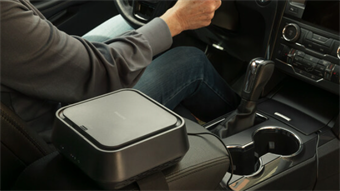Algorithm Uses AI and Machine Learning to Detect Distracted Driving
Siobhan Treacy | September 08, 2017 Distracted driving can cause fatal accidents. Source: Law Group
Distracted driving can cause fatal accidents. Source: Law Group
Engineering researchers at the University of Waterloo have developed computer algorithms that can determine when drivers are texting or if they are doing any other distracting activities while driving.
The system uses cameras and AI (artificial intelligence) to detect hand movements that are different from normal driving behavior. It then grades or classifies the movements by possible safety threats.
This information could be used to improve road safety by warning or alerting drivers when they are distracted and in danger, according to Fakhri Karray, an electrical and computer engineer professor at Waterloo. With more and more features of self-driving cars being added to conventional cars, this new system could be used to trigger protective measures when a driver is seriously distracted.
"The car could actually take over driving if there was imminent danger, even for a short while, in order to avoid crashes," said Karray, a University Research Chair and director of the Centre for Pattern Analysis and Machine Intelligence (CPAMI) at Waterloo.
The algorithms that run this technology were trained using machine-learning techniques in order to recognize actions like texting, talking on a cellphone or reaching into the backseat. The seriousness and danger of the action is assessed based on duration and other factors.
The work builds on previous research at CPAMI on the recognition of signs, like frequent blinking, that drivers are in danger of falling asleep at the wheel. Head and face positioning are important cues of distraction. Ongoing research seeks to combine the detection, processing and grading of different kinds of driver distraction into a single system.
Researchers say that distracted drivers are to blame in up to 75 percent of all traffic accidents worldwide.
Another project at CPAMI is exploring the use of sensors to measure physiological signals like eye-blinking rate, pupil size and heart-rate variability in order to determine if a driver is paying adequate attention to the road.
The research was done in collaboration with Ph.D. candidates Arief Koesdwiady and Chaojie Ou and post-doctoral fellow Safaa Bedawi. It was recently presented at the 14th International Conference on Image Analysis and Recognition in Montreal.





Maybe it should add points to your license...